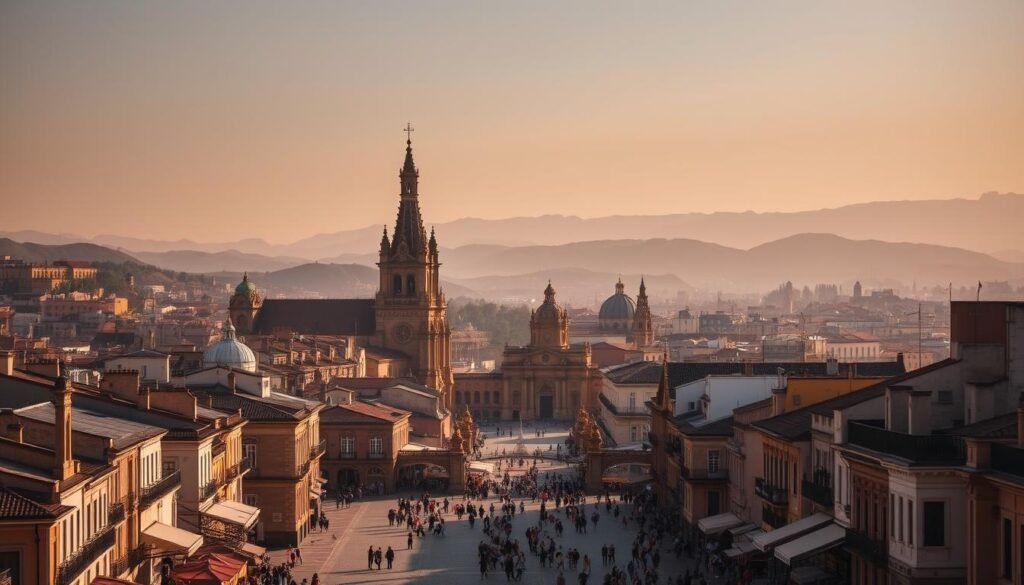Surprising fact: I learned that Barcelona and Madrid each draw millions of visitors every year, and that insight shaped my list of the best cities to visit in spain.
I wrote this guide from my own trips and focused on what made each city stand out. I chose places by signature neighborhoods, memorable sights, and the overall feel I had while exploring.
Expect a mix of art-packed capitals like Madrid, Gaudí wonders in Barcelona, Moorish palaces in Andalusia, and northern beach towns. I highlight museums, cathedrals, palaces, and bold modern architecture that define each destination.
I also share practical tips for linking stops by train, the best time to linger in plazas, and how to pair food discoveries with cultural deep dives. My aim is to help you plan a trip that matches your pace and curiosity.
Key Takeaways
- I picked cities for standout experiences and easy connections for multi-stop trips.
- You’ll find art museums, Moorish sites, Gothic cathedrals, and modern landmarks.
- Food and local routines shape the best moments — from pintxos to paella.
- Practical tips cover trains, day routes, and seasonal timing for smarter travel.
- Insider viewpoints and market streets help you recreate my favorite moments.
How I Chose My Top Spanish Cities and What to Expect
I set clear criteria so my picks would reflect real travel value. I balanced cultural depth, neighborhood character, and standout attractions that rewarded lingering rather than just ticking boxes.
Transportation mattered. Madrid and Barcelona serve as major hubs, and Spain’s high-speed trains link Madrid, Barcelona, Valencia, and Andalusia. That ease of movement shaped which stops pair well on a one- or two-week route.
I judged each place by its blend of history and modern life — from Valencia’s UNESCO Silk Exchange to Bilbao’s Gothic churches and Gehry-designed museum. Museum density and iconic collections, like the Prado or the Guggenheim, weighed heavily.
“I favored spots that offer memorable meals, markets, and plazas as much as headline monuments.”
- I scored culinary scenes and daily rhythms.
- I considered seasonality and crowd levels for comfortable visits.
- I set minimum stay suggestions so you know how much time to allot.
If you want more on my method and route ideas, see my roundup of best cities to visit in Spain.
Northern Showstoppers: Beaches, Basque Culture, and Bold Architecture
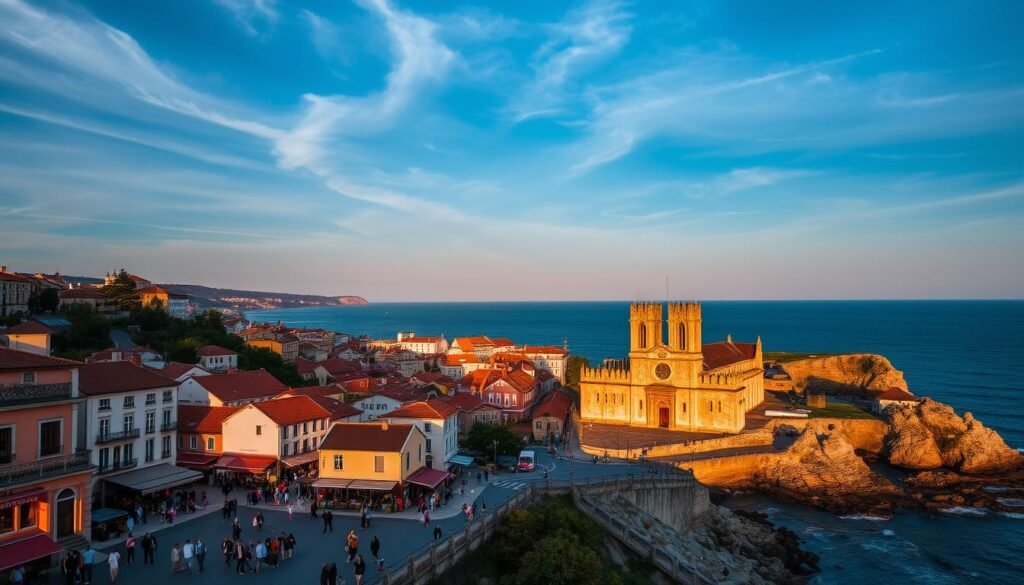
The northern arc surprised me with sea air, surf, and a trio of towns that mix culinary daring with striking design. Each stop feels different, yet they link easily by rail or a short drive along the coast.
San Sebastián — La Concha’s golden curve, pintxos perfection, and Monte Igueldo views
San Sebastián sits on the Bay of Biscay with La Concha, an elegant urban crescent that invites beach time. I hiked or took the cable car up Monte Igueldo for wide-open views and late-afternoon light.
Evenings here are a ritual: pintxos bars cluster in the Parte Vieja and Michelin-starred kitchens push creative seafood forward.
Bilbao — Guggenheim brilliance, riverside revival, and Gothic-to-contemporary contrasts
Bilbao surprised me with its bold transformation. Frank Gehry’s Guggenheim, opened in 1997, put the city on the world map for modern architecture.
The riverfront now pairs titanium curves with the Gothic Santiago Cathedral and the neo-baroque Arriaga Theater. I recommend starting museum time early, then strolling the river paths.
Barcelona — Gaudí icons, Gothic Quarter streets, city beaches, and a powerhouse food scene
Barcelona fuses fantasy architecture with urban pulse. La Sagrada Familia and Park Güell feel theatrical, while the Gothic Quarter’s narrow streets invite wandering.
City beaches mean you can swap museums for sand by late afternoon. I often plan a morning at Park Güell and save golden hour for a waterfront promenade.
| City | Signature | Quick tip |
|---|---|---|
| San Sebastián | La Concha beach & pintxos scene | Hike Monte Igueldo, then pintxos-hop in Parte Vieja |
| Bilbao | Guggenheim & riverside revival | Book morning museum tickets and walk the river |
| Barcelona | Gaudí landmarks & city beaches | See Park Güell early, save sunset for the coast |
“Sea air, art, and food shape long memories here.”
Andalusian Gems: Moorish Palaces, Flamenco Nights, and Sunlit Squares
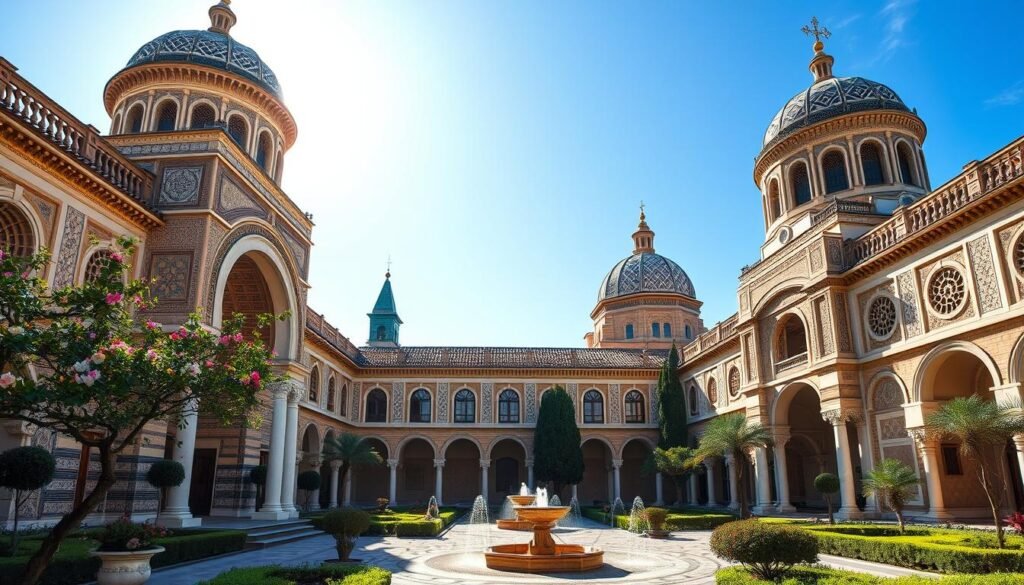
Andalusia captures me with sunlit plazas, layered architecture, and nights that hum with guitar and clapping. Each city here blends cool courtyards and citrus-scented lanes with living traditions that feel immediate and alive.
Seville — Royal Alcázar splendor, the Giralda and Cathedral, and the magic of Santa Cruz
I wandered the Royal Alcázar and admired Mudéjar panels that sit alongside Gothic and Baroque ornament. The Giralda towers over the quarter, and evening tapas in Santa Cruz make for perfect, slow nights.
Granada — The Alhambra’s UNESCO wonder, Albaicín lanes, and Sierra Nevada views
The Alhambra and Generalife reward early starts and pre-booked tickets. I lost time in Albaicín’s whitewashed streets and found sweeping hillside views toward the mountains.
Córdoba & Málaga — Mezquita arches, patios, fortress panoramas, and del sol beaches
Córdoba’s Mezquita stunned me with its forest of arches and a secret old town full of flower-filled patios. In Málaga, the Alcazaba and Gibralfaro offer castle views, while the Picasso Museum and the Costa del sol beaches show the city’s modern side.
- Quick tip: Cluster palaces and gardens early, then save late afternoons for cafes and golden-hour photos.
- Consider a guided route like the 12-night honeymoon route if you prefer a seamless multi-stop destination.
“Cool courtyards, citrus-scented lanes, and the echo of guitars make Andalusia unforgettable.”
Heartland and Heritage: Museums, Palaces, and Timeless Old Towns
![]()
I often start a day in Madrid with a gallery visit and end it wandering cobbled lanes under warm streetlights. Morning at the Prado and Reina Sofía lets me see national treasures, including Picasso’s Guernica, before the crowds arrive.
After museums, I relax in El Retiro Park. The green lawns and boating lake make a calm counterpoint to grand buildings and wide avenues.
Madrid — galleries, royal grandeur, and plaza life
The Royal Palace and nearby stately buildings give the capital a ceremonial feel. Yet cozy cafés along tree-lined boulevards balance those formal spaces.
I time museum visits early, then plan a slow lunch and an aimless walk toward Plaza Mayor for twilight people-watching and tapas.
Toledo — medieval layers and river views
Toledo feels like a time tunnel. The Cathedral ranks among Spain’s top churches and the hilltop Alcázar watches over the river.
Sinagoga del Tránsito and narrow lanes show Christian, Jewish, and Muslim history woven into one old town fabric. I chase sunset at riverside overlooks for the best photos.
| Stop | Highlight | Practical tip |
|---|---|---|
| Prado & Reina Sofía (Madrid) | Masterpieces and Guernica | Visit early, pair with Retiro for a midday break |
| Royal Palace & Boulevards | Grand official buildings | Walk nearby cafés after palatial tours |
| Toledo Old Town | Cathedral, Alcázar, Sinagoga del Tránsito | Day trip from Madrid; aim for late afternoon photos |
“I pair museum mornings with slow neighborhood walks; that mix keeps art days joyful rather than tiring.”
Quick pairing tip: Treat Madrid and Toledo as a culture-packed duo. An easy train trip delivers centuries of history within a compact, walkable core.
Planning Your Spain Itinerary: Routes, Trains, and Smart Day Trips

Smart routes and train schedules turned long transfers into restful travel time. I planned loops that link Madrid, Barcelona, Valencia, and Andalusian hubs using Spain’s high-speed rail. That meant I skipped a car and spent less time packing or driving.
Rail-ready routes
Use rail loops that start in Madrid or Barcelona and string four to six stops with minimal transfers. I book longer legs mid-day so a train can double as a rest period and planning window.
Tip: reserve seats on longer connections and keep a small bag for timed-entry sites like the Alhambra.
Day trips I love
Short train hops gave me Girona’s colorful riverside and cathedral within an easy morning. Another favorite was Tossa de Mar, with medieval walls and quiet coves along the Costa Brava.
Balancing coast and culture
Slotting a coastal pause between monument-heavy stops reset my energy. I put San Sebastián or Málaga between Seville and Granada for beaches and a relaxed evening walk.
- Sample timing: 2–3 nights major hub; add an extra day for sunset viewpoints.
- Book trains early, plan backward from timed tickets, and use shoulder hours to avoid crowds.
- Pack light, use station lockers if needed, and map transfers before arrival.
| Start | Loop idea | Why it works |
|---|---|---|
| Madrid | Madrid → Córdoba → Seville → Granada | Monuments then beach breaks nearby Málaga |
| Barcelona | Barcelona → Girona → Tossa de Mar → Valencia | Short hops, riverside charm, coastal coves |
| Combined | Madrid → Valencia → Barcelona → Málaga | High-speed links, varied sites and coast stops |
“A clear rail plan kept my days full of sites, not logistics.”
For more route ideas and sample itineraries, see sample itineraries.
Best Cities to Visit in Spain: My Personal Ranking Criteria
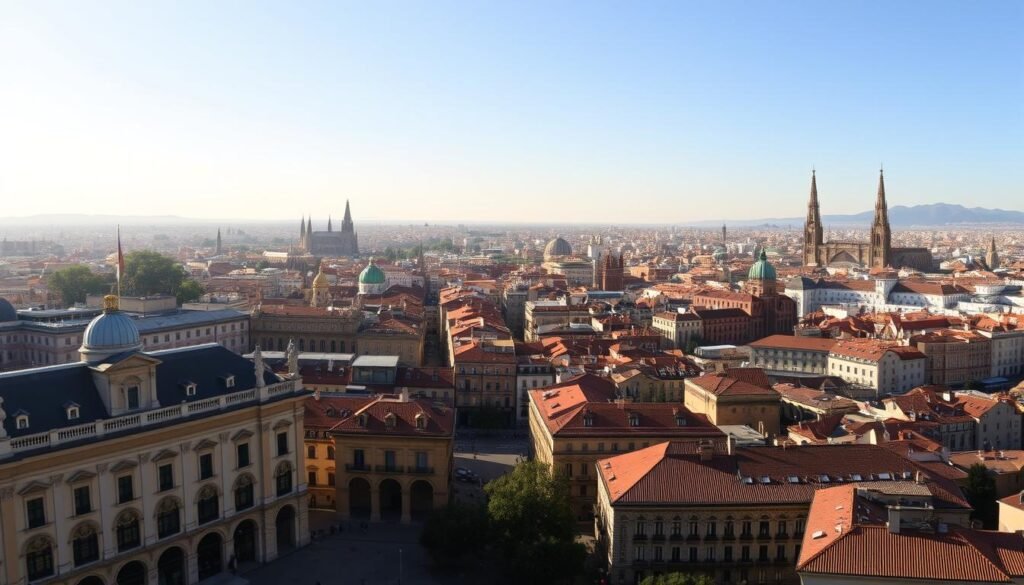
My ranking method blends measurable factors—like museum density—with the small moments that made each stop memorable.
I score each place across four pillars: architecture, museums, culinary scene, and the feel of the old town. I add bonus points for easy waterfront access or quick beaches that lift a short trip.
I use UNESCO sites as tie-breakers when two locations are close. Landmarks like the Alhambra, the Giralda, and Valencia’s Silk Exchange often tip the scale.
Quick-hit highlights for short stays
- One museum: Prado in Madrid; one landmark: La Sagrada Familia in Barcelona.
- One neighborhood: Toledo’s old quarter; one food experience: pintxos in San Sebastián.
- Daily plan: morning anchor attraction, midday wander, evening viewpoint or relaxed dinner.
Timing hacks: sunrise at a viewpoint, late-entry museum hours, and mid-afternoon café breaks in shaded squares cut fatigue and boost enjoyment.
“My framework helps first-time visitors balance intense museum days with open-air discoveries.”
For an extended route and ideas on pairing stops, see cities spain route ideas.
When to Go and What to Budget: Seasons, Festivals, and Value Tips
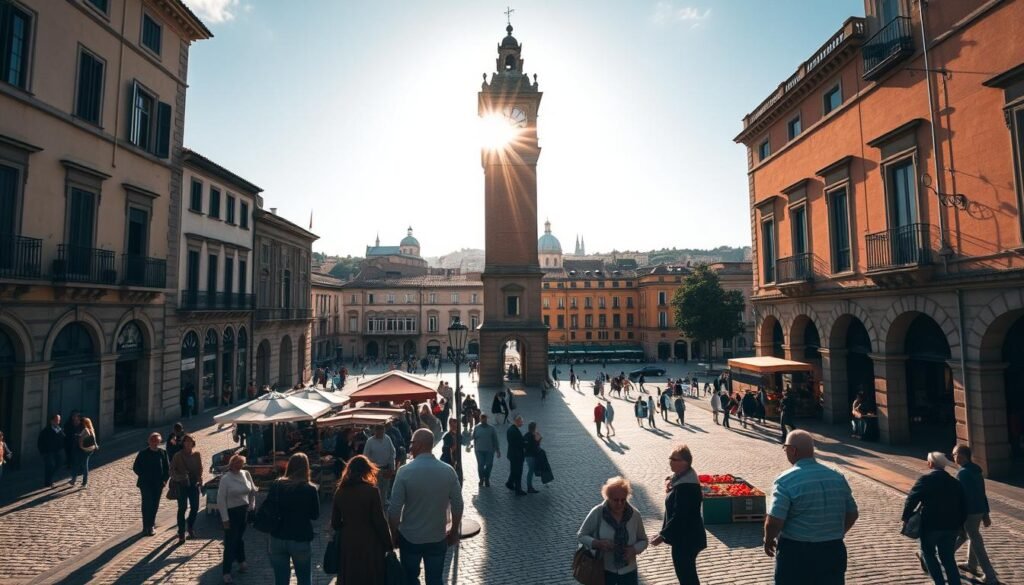
The month you pick often decides whether you get long beach afternoons or quiet museum mornings.
I favor spring and fall for comfortable weather, lighter lines, and easier dinner reservations in popular cities. Shoulder-season travel saves money and keeps days flexible.
Timing it right — Spring and fall sweet spots, summer beach time, and festival buzz
Summer supercharges the Mediterranean coast with long beach days and late promenades. Expect higher prices and fuller venues during July and August.
Major festivals add electricity and costs. Events like Seville’s flamenco season and Pamplona’s run attract many visitors, so plan or avoid those spikes.
- Budget markers: mid-range lodging, moderate dining, and internal trains—plan extra for festival dates.
- Daily pacing: in hot months, start early, take a long lunch, and sightsee in shaded afternoons.
- Booking: reserve restaurants and timed-entry sites well ahead in high-demand neighborhoods.
| Season | What it feels like | Budget tip |
|---|---|---|
| Spring (Mar–May) | Warm days, lighter lines, good museum hours | Lower fares than summer; book 4–6 weeks ahead |
| Summer (Jun–Aug) | Beach energy, festivals, crowded hotspots | Higher rates; reserve lodging early and expect peak prices |
| Fall (Sep–Nov) | Warm seas early, cool inland, fewer tourists | Shoulder-season deals; aim for mid-month travel |
“Match your dates with the mood you want—festival buzz or easy wandering.”
Watch national holidays and local closures so a planned day never lands on an unexpected shutdown. I also track exchange rates and flight trends; they can make one window much better value for the same trip around the world.
Essential Experiences That Make Each City Unforgettable
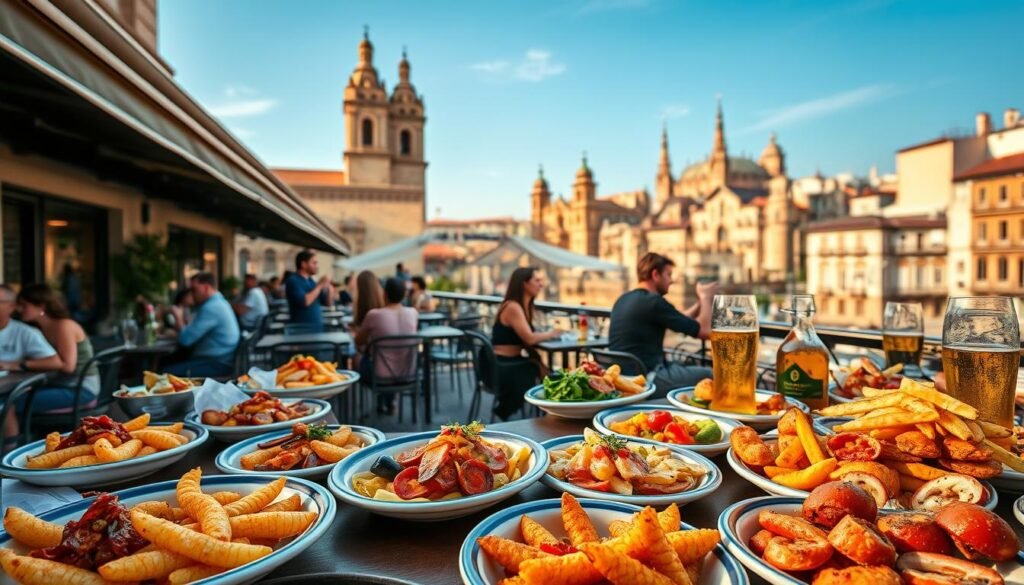
A handful of experiences made certain stops stay with me long after I left. I focus on small rituals that reveal a place: a food trail, a rooftop pause, or a narrow street that opens onto light.
Tapas and wine trails — From Basque pintxos bars to Andalusian bodegas
I map my food trails so you can pintxos-hop in San Sebastián, grab tapas near Seville’s Cathedral, and find classic bars where local wine shines. A short guided tour or a self-led wander unlocks secret sidestreets and neighborhood favorites.
Etiquette: order small plates, share, and leave coins or a modest tip at bar counters. Pace your evening with a pause in a quiet square between stops.
Iconic viewpoints — Giralda, Gibralfaro, Miramar, and hilltops over river gorges
My skyline checklist includes climbing the Giralda, walking up to Gibralfaro, and wandering Miramar above La Concha. Toledo’s hill perches and Granada’s palace terraces pair city panoramas with distant mountains.
Pro tip: pair a wine tasting or a snack with each viewpoint so your day alternates flavor and scenery, not lines and fatigue.
“A slow evening in a small plaza often shows me more of the local rhythm than a whole museum.”
- Pack comfy shoes for stone streets, a light layer for breezy overlooks, and a refillable bottle for long walks.
Conclusion
What stayed with me most was how close beaches, mountains, and centuries-old buildings sit side by side across this country. That mix makes each city a new kind of home for a few days and keeps every tour lively.
I urge you to pair capitals and smaller towns so you see sweeping architecture, quiet quarter lanes, and lively squares. If your time is short, my quick shortlist is Barcelona, Madrid, Seville, Granada, San Sebastián, and one choice between Córdoba or Valencia.
Leave room for detours: an unplanned hour down a winding street often becomes the highlight of a trip. Close your days at a viewpoint for golden views, and know these beautiful cities will welcome you back with new scenes each time.


